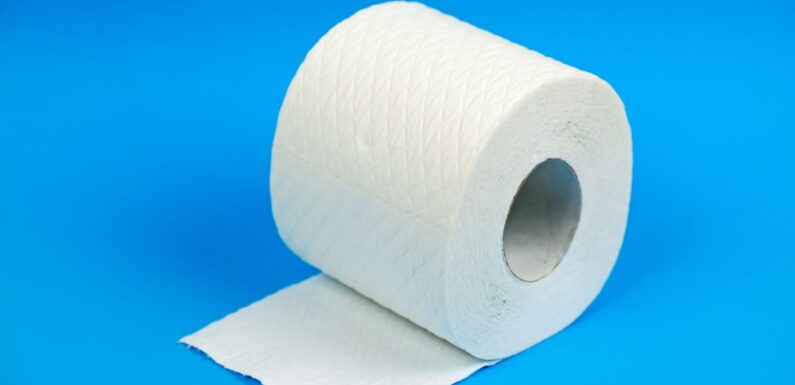
HAVE you ever given deep thought to the way you wipe your backside?
Do you sit or stand to go about your business? How much loo roll do you use? And do you scrunch or fold it?
We all go through these motions daily without paying much attention to them – but it turns out that your wiping technique could be putting your health at risk.
You might think you can do whatever you please when it comes to your own bum.
But there are a few parameters to follow to ensure you're not putting yourself at risk of nasty health issues.
1. Always wipe from front to back
Were you ever told off as a kid for wiping in the wrong direction?
Read more on toilet habits

How often should you poo & 4 other toilet habit questions you're scared to ask

What the texture of your poo reveals about your health – and the danger signs
Well, it looks like your parents got it right.
Wiping from front to back – so from the direction of your urethra towards your bottom – is really important to ensure you don't get an infection.
That's because you bum harbours lots of bacteria, according to gynaecologist Alyssa Dweck.
She told Health: "There are far more bacteria in the rectal area; that's why you want to avoid dragging the toilet paper in the other direction toward your urethra.
Most read in Health

Outbreak of measles spreads as new cases of killer disease detected in England

NHS to offer almost 300,000 women a 4p pill to halve breast cancer risk

Critically ill Brit baby given Italian citizenship to get life-support treatment

Signs you’re borderline alcoholic & tips to cut back as Adele admits struggle
"Bringing this bacteria up [towards the] front can contribute to a urinary tract infection (UTI)," the gynaecologist warned.
This is especially the case for women who have a shorter urethra – the tube that lets out pee from your bladder – than men. This makes it easier for bacteria to get into the bladder.
The National Institutes of Health said wiping and washing the vaginal area incorrectly from back to front is one of the leading personal hygiene factors behind recurrent UTIs.
It also suggested you wash your hands BEFORE handling toilet paper to wipe yourself.
2. Choose the right loo roll
When it comes to our toilet paper, many of us will often go for what's cheapest. Or you might go for the cushiony, scented kind if you want to treat yourself.
According to Dr Dweck, the best type is soft, white toilet paper that hasn't been dyed and isn't scented.
Anything that's thin and scratchy, scented, and even the recycled stuff can cause irritation down there or even a reaction.
And don't be tempted to use moist, store-bought wipes if you have haemorrhoids or anal fissures.
They might leave your bum feeling fresh, but Dr Dweck warned that the wipes can cause irritation and rashes, as your vulva and anal area can be sensitive to fragrances.
3. Use enough toilet paper sheets
There isn't really an exact number of toilet paper sheets you should be using in your trips to the loo.
Toilet paper manufacturer Cushionelle said the average person is said to use nearly seven sheets per wipe.
Martin Richards, Director of Hygienic Technology Experts at SMARTi Environmental, set his estimate a little higher.
He previously revealed: "If you’re using toilet roll efficiently, the average person should only need 10 sheets per visit to the loo.
"Obviously, this can depend widely on whether it’s a number one or number two, but essentially try not to wrap yarns of toilet roll round your hand to use as this can be a waste.”
Whatever the number of squares you use, you should always wipe your bottom until it's clean.
Experts from Harvard Medical School said that if your anal area isn't cleaned properly after a bowel movement, a small amount of stool may be left behind on the skin, causing the area to itch.
4. Sit or stand – it doesn't matter
Whether you like to sit or stand, there are pros and cons to both techniques.
As Cushionelle put it: "For sitters, the main pro is cheeks stay spread, preventing any cheek-on-cheek smearing. That means easy cleaning access.
Read More on The Sun

Signs you're borderline alcoholic & tips to cut back as Adele admits struggle

Cadbury discontinues Christmas chocolate – but savvy shoppers find Costco dupe
"For standers, they like that their hands don’t come near the toilet bowl (especially important for public toilets), and they won’t accidentally touch bare cheek or thigh with soiled toilet paper when they’re coming around for a visual inspection."
Whatever position gives you the best access is the one you should go for.
Symptoms of a UTI
Symptoms of a urinary tract infection (UTI) may include:
- pain or a burning sensation when peeing
- needing to pee more often than usual
- needing to pee more often than usual during the night
- needing to pee suddenly or more urgently than usual
- pee that looks cloudy
- blood in your pee
- lower tummy pain or pain in your back, just under the ribs
- a high temperature, or feeling hot and shivery
- a very low temperature below 36C
You might also notice that your wee is darker or smellier than usual.
You should see a GP if you have symptoms of a UTI.
Source: Read Full Article
